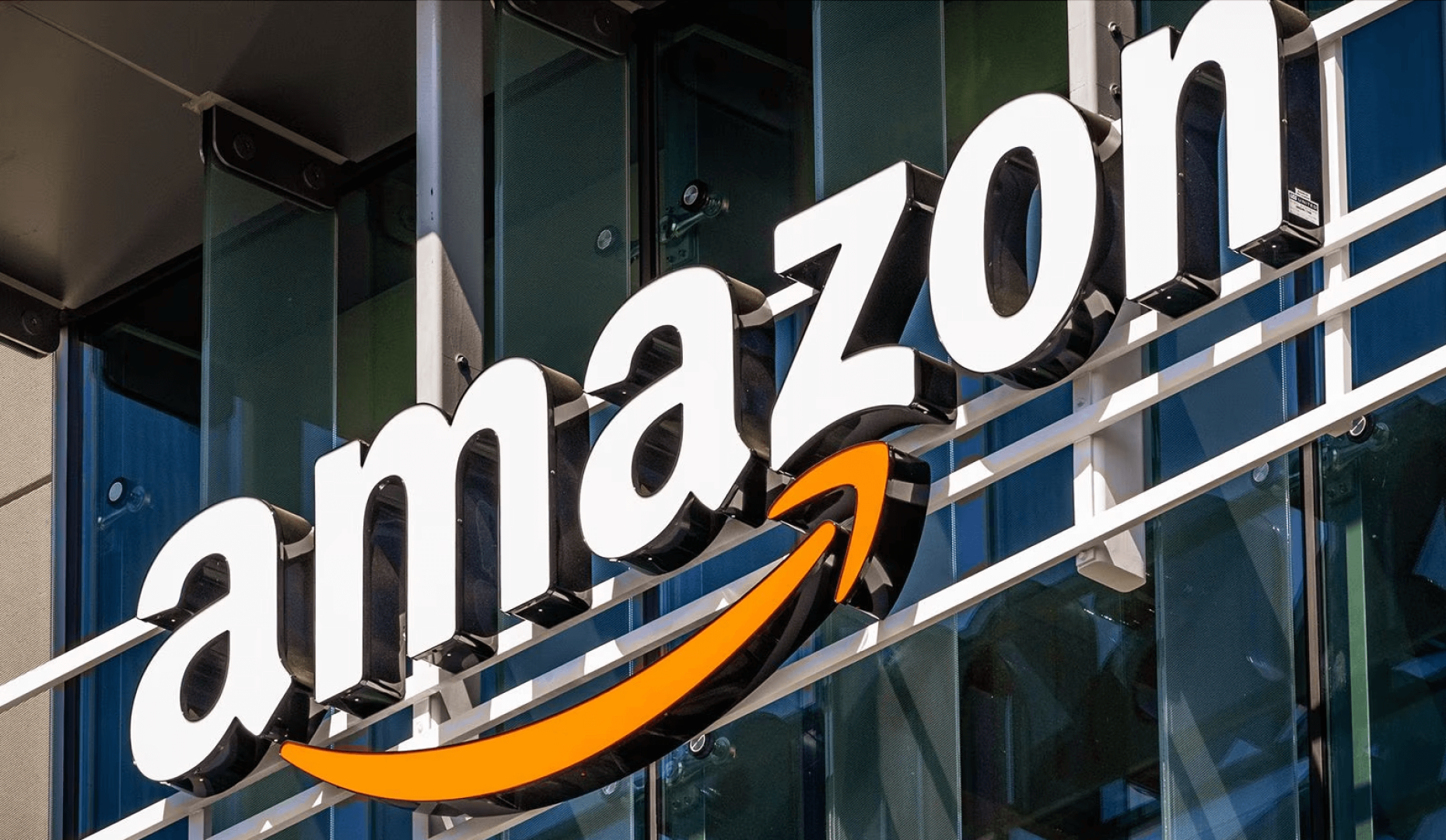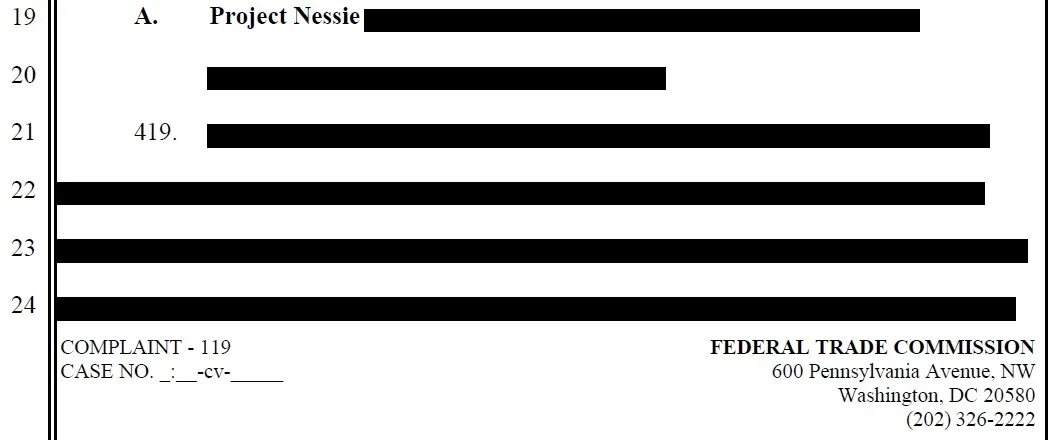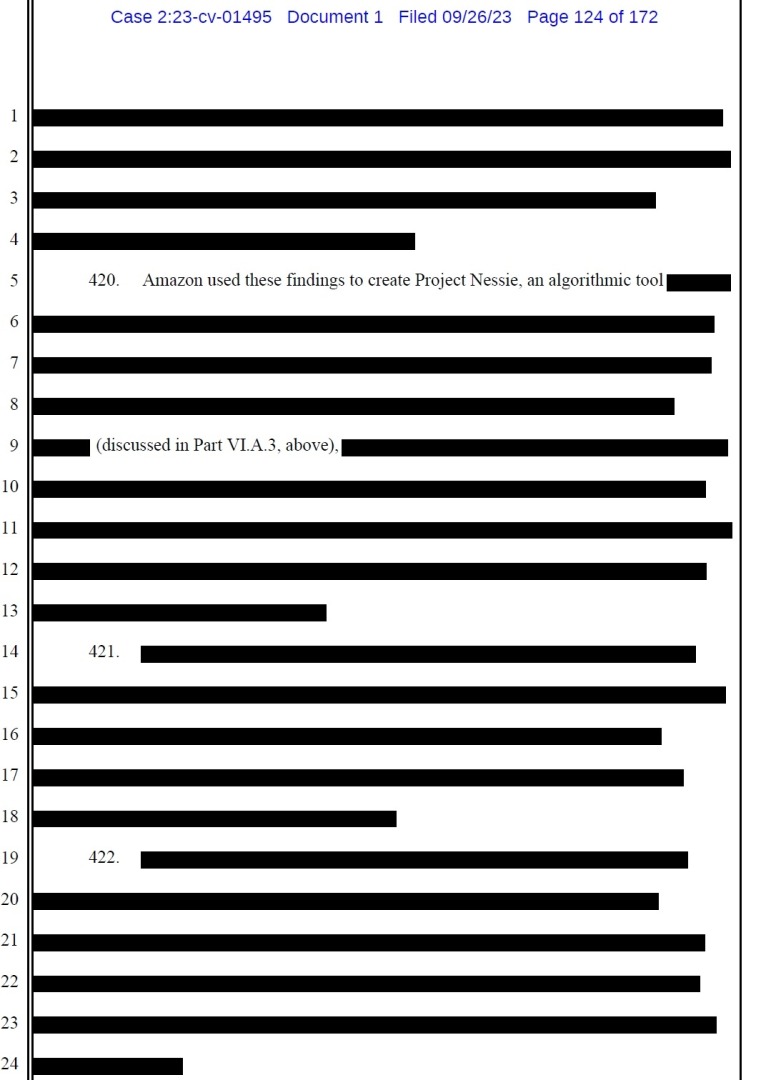Comments
- No comments found

The Federal Trade Commission and 17 state attorneys general have sued Amazon.com, as the FTC press release says, “alleging that the online retail and technology company is a monopolist that uses a set of interlocking anticompetitive and unfair strategies to illegally maintain its monopoly power.”
The FTC complaint filed with the US District Court for Western Washington is here. A first reaction from the bigwigs at Amazon is here. I’m still digesting the arguments, but here, I’ll offer some initial reactions about what to watch as the case–and the reporting on the case–proceeds.
1) Being a monopolist is not illegal under antitrust law. If a firm achieves a monopoly by providing a highly desired set of goods and services, that is legal and allowed. However, a firm with a dominant position does become limited in how it seeks to defend its monopoly and to fight off potential new entrants. I’ve seen a number of headlines that refer to the case as an “anti-monopoly” case, which isn’t quite right. Instead, it’s about actions to prevent potential competitors. As the FTC press release notes: “The complaint alleges that Amazon violates the law not because it is big, but because it engages in a course of exclusionary conduct that prevents current competitors from growing and new competitors from emerging.” Or as the legal complaint says more formally: “This case is about the illegal course of exclusionary conduct Amazon deploys to block competition, stunt rivals’ growth, and cement its dominance.”
2) Thus, this antitrust case is not about “breaking up Amazon.” It is about whether Amazon needs to stop certain business practices.
3) What does the FTC point to as the “exclusionary practices”? As best as I can tell, it boils down to alleged actions that discourage third-party firms that sell on Amazon from selling at a lower price on other websites, and pressures from Amazon to have third-party firms use Amazon’s “Prime” shipping service and to advertise on Amazon.
4) Many retailers offer some form of “price match guarantee,” in the form of “if you find the same item for a lower price, we will match that lower price.” But economists have observed for some time that price matching can have anti-competitive aspects. Consider the case of an incumbent airline with most of the traffic between two cities. A new airline starts up, offering a lower price. The incumbent airline matches the lower price, so the new airline can’t attract customers. And when the new airline goes out of business, the incumbent firm can then raise prices again.
In its original form, Amazon sold Amazon-branded goods. Starting in 1999, it started selling third-party goods as well. The Amazon response says that these third parties now consist of 500,000 companies that account for 60% of total sales on the Amazon website. Thus, in some cases, it seems possible that Amazon-branded goods would be in competition with third-party goods. A scenario could unfold where, if Amazon continually matches any price cuts from others, the others would learn that there isn’t any business to be gained by cutting prices.
5) Because Amazon (of course) controls the formatting of the website, it has the power to list third-party sellers either higher or lower in the search results. It can list firms more highly if they pay Amazon for advertising. It also can offer links to its “Prime” shipping service, so that customers may find it easier to buy from a firm that is directly linked to Prime shipping, and harder to buy from firms that use other shipping. In other words, Amazon has some power to levy charges on its third-party sellers. The FTC complaint asserts: “For example, Amazon has hiked so steeply the fees it charges sellers that it now reportedly takes close to half of every dollar from the typical seller that uses Amazon’s fulfillment service.” (It’s worth noting that the word “reportedly” carries some heavy weight in that sentence.)
6) Putting these pieces together, the FTC claim is that many small retailers feel that they have to be on Amazon, because it’s where the customers are. However, many small retailers also feel mistreated by Amazon: discouraged from cutting prices, and under pressure to pay fees to use Amazon-owned shipping and advertising. As a result, the argument goes, these retailers are constrained from offering lower prices and perhaps a wider range of services to customers. But it seems fair to say that the primary focus of the complaint is not on customers directly, but on how third-party sellers are unfairly treated by Amazon.
7) In some ways, this case is about the multiple kinds of fees that Amazon charges its third-party sellers, and the interaction of these fees. The FTC complaint says: “Amazon charges sellers four primary fees to sell on its Marketplace. First, Amazon requires sellers to pay a selling fee, which can be a monthly fee or a fee for each item sold. Second, Amazon charges all sellers a commission or “referral fee” based on the price of each item sold on Amazon. Third, Amazon charges sellers for the use of Amazon’s fulfillment and delivery services. Fourth, Amazon charges sellers for advertising services.” So, if a firm pays Amazon the basic selling and referral fees, but doesn’t advertise with Amazon, then is it “unfair” if firms that do advertise are featured more prominently?
8) At least some of these accusations seem to me to be illuminated by the factual record. For example, Amazon says: “The FTC’s allegation that we somehow force sellers to use our optional services is simply not true. Sellers have choices, and many succeed in our store using other logistics services or choosing not to advertise with us. We also enable sellers to use the trusted Prime badge when other logistics services are able to meet our Prime customers’ high expectations for fast, reliable delivery.” I’m sure that third-firms selling on Amazon technically have the ability to use methods of delivery other than Prime, and that they are not technically required to advertise on Amazon. But it would be interesting to know how many firms exercise those choices–and to see some systematic evidence on whether Amazon uses its power over formatting the website to pressure third-party sellers.
9) Amazon also argues that in exchange for fees, its third-party sellers receive an array of other business management services: “We have invested billions of dollars in people, resources, and services to support sellers at every stage of their journey. We regularly provide them with new data and insights about selling on Amazon, the capability to tailor products and listings to customer needs, and recommendations and advice to help grow their businesses. We also offer features that help sellers create and manage product listings, track sales, fulfill orders, respond to customers, and more.” Again, I’m sure all of these services are available, but it would be interesting to see evidence on how widely such services are used and valued by third-party sellers.
9) A standard issue in antitrust cases is an argument over the size of the market. For example, way back in 1987 there was a merger between two intercity bus companies: Greyhound and Trailways. The government antitrust authorities argued that this would give the merged company a monopoly over intercity bus traffic. The companies argued that the relevant market for their case was not intercity bus traffic, but all methods of intercity transportation: private car, rental car, charter bus, limo, taxi, rail, and plane. Within this much broader context of all intercity transportation, the merged Greyhound-Trailways firm had only a small share of the market.
In the Amazon case, the FTC asserts at several points that Amazon is a monopolist; in particular, that it has monopoly power in the “online superstore market.” Amazon seems certain to argue for a broader conception of the retail market as a whole. As Amazon writes in its response: “Consumers today still buy over 80% of all retail products in physical stores. And as any shopper knows, you can buy the same products at any number of different retailers that compete vigorously with each other, including brick-and-mortar stores, online stores, and quickly growing hybrid models like buy-online-pick-up-in-store.” I expect Amazon to argue that even within the “online superstore market” it has serious competitors like WalMart, and in the overall market for retail sales, Amazon is a relatively small part.
10) What is Project Nessie? The FTC legal complaint refers at a number of places to how Amazon uses “Project Nessie” as part of its pattern of exclusionary conduct. However, when the FTC releases a legal complaint, the subject of the complaint can request to have certain parts of the complaint that might provide information about the inner workings of the firm redacted. Thus, when you look at the section of the FTC complaint about Project Nessie, it looks like this:


At the TechCrunch website, Devin Coldewey looks for clues to answer the question, “What is Amazon’s [redacted] ‘Project Nessie’ algorithm?” As Coldewey, it seems likely to be an algorithm that either manipulates prices (maybe up a little and down a little when profitable) or search (to favor Amazon products or third-party firms that advertise with Amazon)–but perhaps could be something more arcane. In the next few weeks, and especially if the case eventually goes to trial, we are likely to learn more about Project Nessie.
11) I wouldn’t be at all surprised if, when all is said and done, the FTC case causes Amazon to announce that it is altering some of its business practices. Given the internal pressures at Amazon (as at any company) to increase profits, I wouldn’t be at all surprised if some of the algorithm designers did things that–when viewed in the cold light of day–qualify as “exclusionary conduct.” I also wouldn’t be at all surprised if such actions happen in the form of a settlement in which Amazon does not admit any guilt. In Amazon’s relationship with its third-party sellers, it has power to adjust multiple fees, multiple services, along with search results and website presentation. My guess is that even when or if the FTC pressures Amazon to change some of its practices, it will be able to pivot to other choices that have similar effects.
Remember the major antitrust case against Microsoft, settled in 2001? Here in 2023, Microsoft is the second-largest company in the world by market capitalization, a tick behind Apple and a tick ahead of Saudi Arabian Oil. After all the sound and fury, I don’t expect that this particular lawsuit will have much affect on Amazon a few years down the road, either.
Timothy Taylor is an American economist. He is managing editor of the Journal of Economic Perspectives, a quarterly academic journal produced at Macalester College and published by the American Economic Association. Taylor received his Bachelor of Arts degree from Haverford College and a master's degree in economics from Stanford University. At Stanford, he was winner of the award for excellent teaching in a large class (more than 30 students) given by the Associated Students of Stanford University. At Minnesota, he was named a Distinguished Lecturer by the Department of Economics and voted Teacher of the Year by the master's degree students at the Hubert H. Humphrey Institute of Public Affairs. Taylor has been a guest speaker for groups of teachers of high school economics, visiting diplomats from eastern Europe, talk-radio shows, and community groups. From 1989 to 1997, Professor Taylor wrote an economics opinion column for the San Jose Mercury-News. He has published multiple lectures on economics through The Teaching Company. With Rudolph Penner and Isabel Sawhill, he is co-author of Updating America's Social Contract (2000), whose first chapter provided an early radical centrist perspective, "An Agenda for the Radical Middle". Taylor is also the author of The Instant Economist: Everything You Need to Know About How the Economy Works, published by the Penguin Group in 2012. The fourth edition of Taylor's Principles of Economics textbook was published by Textbook Media in 2017.
Leave your comments
Post comment as a guest